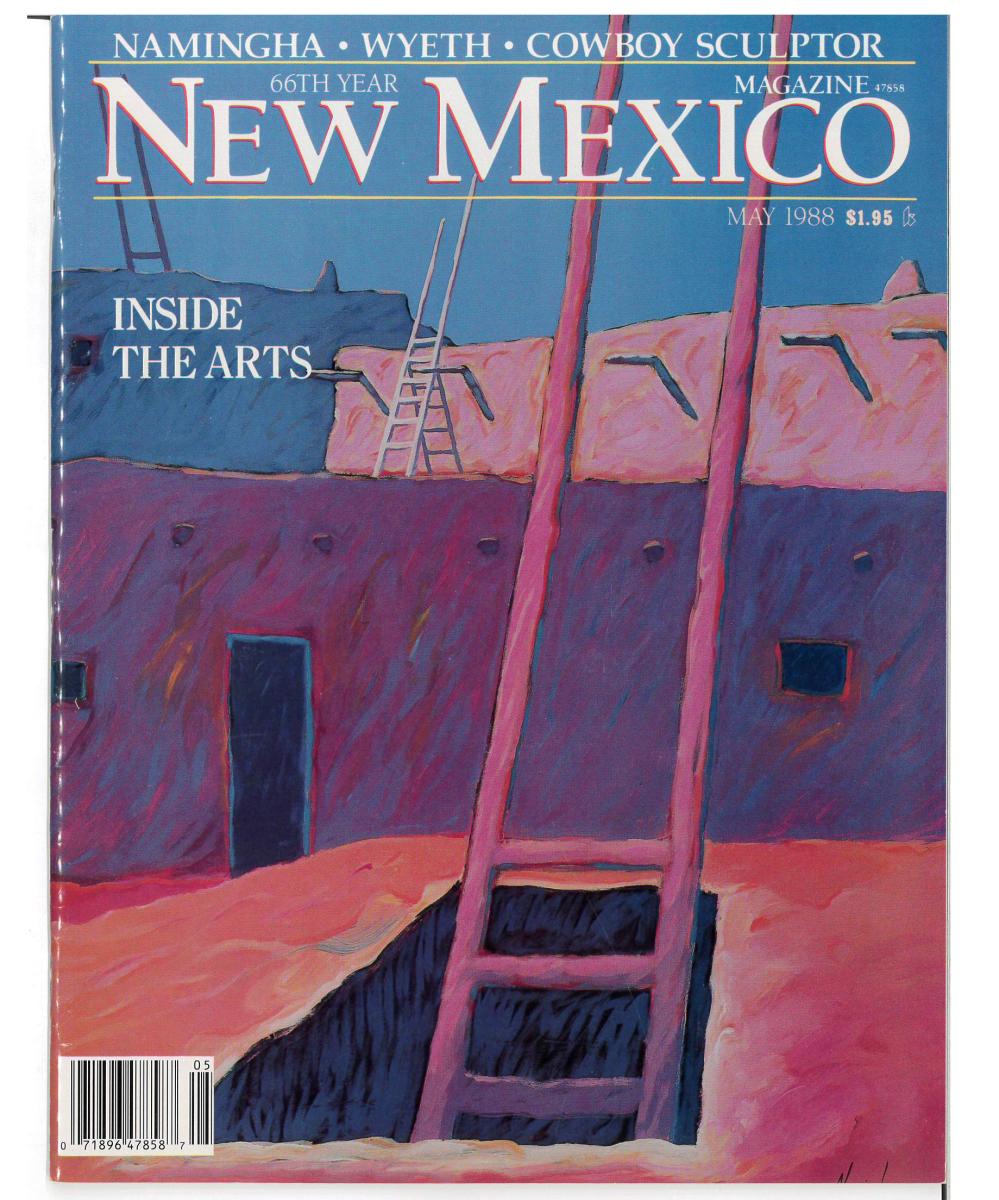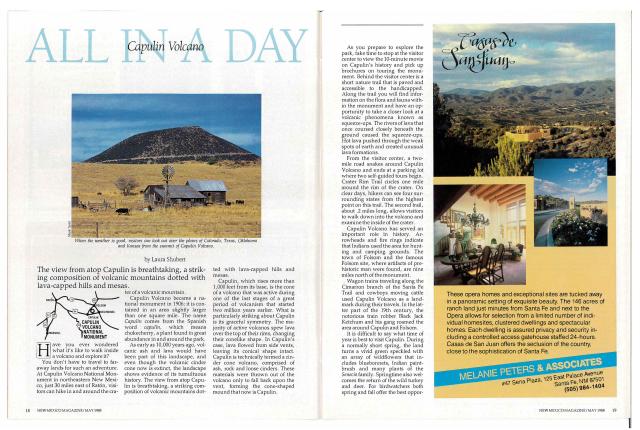HAVE YOU EVER WONDERED what it's like to walk inside a volcano and explore it? You don't have to travel to faraway lands for such an adventure. At Capulin Volcano National Monument in northeastern New Mexico, just 30 miles east of Ratón, visitors can hike in and around the crater of a volcanic mountain.
Capulin Volcano became a national monument in 1906; it is contained in an area slightly larger than one square mile. The name Capulin comes from the Spanish word capulin, which means chokecherry, a plant found in great abundance in and around the park.
As early as 10,000 years ago, volcanic ash and lava would have been part of this landscape, and even though the volcanic cinder cone now is extinct, the landscape shows evidence of its tumultuous history. The view from atop Capulin is breathtaking, a striking composition of volcanic mountains dotted with lava-capped hills and mesas.
Capulin, which rises more than 1,000 feet from its base, is the cone of a volcano that was active during one of the last stages of a great period of volcanism that started two million years earlier. What is particularly striking about Capulin is its graceful symmetry. The majority of active volcanos spew lava over the top of their rims, changing their conelike shape. In Capulin's case, lava flowed from side vents, leaving its conical shape intact. Capulin is technically termed a cinder cone volcano, comprised of ash, rock and loose cinders. These materials were thrown out of the volcano only to fall back upon the vent, forming the cone-shaped mound that now is Capulin.

New Mexico Magazine's May 1988 cover—the same year the magazine celebrated its 66th year.
As you prepare to explore the park, take time to stop at the visitor center to view the 10-minute movie on Capulin's history and pick up brochures on touring the monument. Behind the visitor center is a short nature trail that is paved and accessible to the handicapped. Along the trail you will find information on the flora and fauna within the monument and have an opportunity to take a closer look at a volcanic phenomena known as squeeze-ups. The rivers of lava that once coursed closely beneath the ground caused the squeeze-ups. Hot lava pushed through the weak spots of earth and created unusual lava formations.
From the visitor center, a two-mile road snakes around Capulin Volcano and ends at a parking lot where two self-guided tours begin. Crater Rim Trail circles one mile around the rim of the crater. On clear days, hikers can see four surrounding states from the highest point on this trail. The second trail, about .2 miles long, allows visitors to walk down into the volcano and examine the inside of the crater.
Capulin Volcano has served an important role in history. Arrowheads and fire rings indicate that Indians used the area for hunting and camping grounds. The town of Folsom and the famous Folsom site, where artifacts of prehistoric man were found, are nine miles north of the monument.
Wagon trains traveling along the Cimarron branch of the Santa Fe Trail and cowboys moving cattle used Capulin Volcano as a landmark during their travels. In the latter part of the 19th century, the notorious train robber Black Jack Ketchum and his gang roamed the area around Capulin and Folsom.
It is difficult to say what time of year is best to visit Capulin. During a normally short spring, the land turns a vivid green speckled with an array of wildflowers that includes bluebonnets, Indian paintbrush and many plants of the Senecio family. Springtime also welcomes the return of the wild turkey and deer. For birdwatchers both spring and fall offer the best opportunity for viewing mountain bluebirds, grosbeak, finches and warblers. This spring, Capulin rangers hope to offer guided walking tours of the park.
Summer brings the return of an unlikely, yet profuse seasonal resident: the ladybug. From early June through late August, ladybugs make their homes on the east side of the Crater Rim Trail. George West, Capulin's chief of interpretation and resource management, isn't sure what brings the ladybugs back every year, but during the summer months they decorate the trees to the extent that it is difficult to see the forest for the ladybugs.
Summer visitors who spend the night in the town of Capulin can look forward to historical talks about the monument and surrounding area as rangers give informal talks around a roaring bonfire that warms the chill of the cool mountain evenings.
Don't worry if you can't get to the monument during the warmer months, for winter, too, is a magic time at Capulin. Although there is not a great deal of wildlife to be seen then, plants and trees are covered with a crystal frost that offers photo enthusiasts a chance to capture the dramatic winter landscape. All trails are open during the winter except when heavy snow makes them inaccessible.
Capulin Volcano National Monument, located three miles from the town of Capulin, is open Labor Day through Memorial Day 8 a.m. to 4:30 p.m. Summer hours are extended. Admission to the park is $3 per carload. Camping areas can be found in the nearby communities of Capulin, Folsom, Des Moines and Raton. Des Moines, Raton and Clayton offer overnight accommodations.
To get to the park from Raton and Interstate 25, travel 30 miles east on US 64/87. From Clayton take US 64/87 west for 58 miles.




